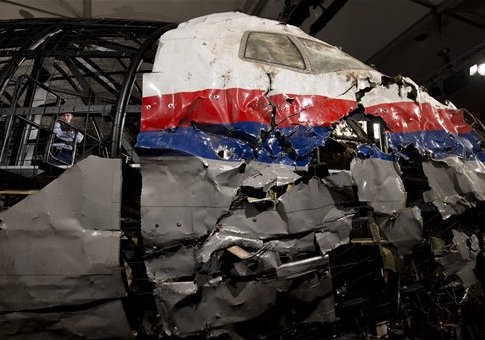An investigation led by the Netherlands concluded that the surface-to-air missile system that downed a Malaysia Airlines plane over Ukraine two years ago came from Russia and was brought into Ukraine at a request from Moscow-backed separatists.
The investigation, first reported by the New York Times, found that the Buk, or SA-11, missile system was brought into Ukraine from Russia and brought back the same night. The jet crash, which occurred on July 17, 2014, killed all 298 people on board, including 80 children and 15 crew members.
The plane crashed at a point of heightened fighting between Russian-backed separatists and Ukrainian troops in eastern Ukraine, months after Russian troops seized Ukraine’s Crimean Peninsula. The U.S. government said following the crash that evidence showed the plane had been brought down by a Russian-made surface-to-air missile launched from territory held by Russian-backed rebels.
The Dutch Safety Board concluded through a 15-month investigation completed last year that the jet was brought down by a Russian-made Buk missile, a finding that the latest probe by the Joint Investigation Team corroborated.
The findings of the investigation, which was led by the Netherlands and also involved prosecutors from Australia, Belgium, Malaysia, and Ukraine, are meant to be potentially used in a criminal trial. The probe stopped short of explicitly accusing Moscow of complicity in the crash and did not name any specific culprits.
The team of prosecutors looked at telephone records, social media, photographs, satellite data, and other evidence. A summary of the investigation’s findings was released at a press conference Wednesday at The Hague, Netherlands.
"It may be concluded that Flight MH17 was shot down on 17 July 2014 by a 9M38 series missile launched from a BUK trailer. This BUK trailer was brought in from the territory of the Russian Federation and after launch was subsequently returned to Russian Federation territory. This conclusion is based largely on forensic investigation," Wilbert Paulissen, a top investigator with the Dutch national police, said of the probe.
Russia and Moscow-backed rebels in Ukraine have consistently denied involvement in the incident.
Ahead of the report’s release, a spokesman for Russian President Vladimir Putin dismissed "speculation" surrounding the crash and pointed to radars recently released by the Russian military showing nothing near the airplane.
"This whole story, unfortunately, is couched in a huge amount of speculation, unqualified and unprofessional information," said spokesman Dmitri Peskov. "There are irrefutable facts. In this case, it is important to draw conclusions with due account of the latest published information, that is, the primary data from radars that detected every airborne object that could take off or be in the airspace above militia-controlled territory."
"If any missile had existed, it could have been fired only from another territory. I do not say which exactly territory it could be. It is specialists’ business," Peskov said.
